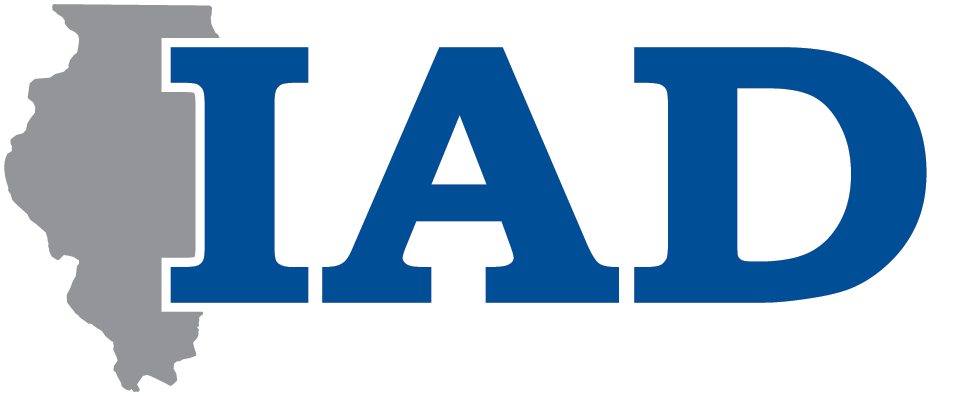The purpose of this position statement is to acknowledge and emphasize the need for qualified Deaf and native users of American Sign Language (ASL) to teach ASL classes at secondary and post-secondary institutions in the state of Illinois. The Illinois Association of the Deaf (IAD) also wishes to use this platform to increase awareness regarding minimum requirements for ASL teachers at the secondary and post-secondary level.
Benefits of Foreign Language
Secondary schools and colleges across the nation offer a variety of foreign language courses for their students to take. The courses further their knowledge and marketability. The ability to communicate in multiple languages is becoming increasingly important in an integrated global business community and schools are recommending students take two years of foreign language courses before entering college.1 Furthermore, foreign language studies have been shown to result in positive attitudes and less prejudice towards individuals that use a different language to communicate.2
Growth of ASL Course Offerings
ASL course offerings as a foreign language are growing at a rapid rate, and is now the third most popular course taken at the college level.3
In 1996, 1% of high schools across the nation offered American Sign Language courses. By 2006, the number doubled.4
And most recently, the Modern Language Association of America reported that as of 2016, 107,060 students were enrolled in American Sign Language classes in post-secondary educational institutions, an increase of 34 percent from 2006 to 2016.5
Perspectives of Using Non-Native Users of ASL
Using non-native users of ASL (hearing people) instead of Deaf individuals to teach ASL is perceived as oppression of Deaf individuals and cultural appropriation, especially if hearing individuals are selected over qualified Deaf applicants to teach. 6 , 7
Benefits of using Deaf and Native Users of ASL to Teach Courses
Deaf and native users bring a rich understanding of ASL and an innate understanding of the culture in which the language is used within. This offers students a greater benefit than anyone who does not use the language on a daily basis could provide.
“…a hearing instructor teaching ASL is an analogue to white people teaching languages and cultures of the First Nations or Native Americans. That’s unacceptable. A hearing ASL instructor doesn’t get it, no matter how they defend or rationalize. They just don’t get it, period. A hearing privilege is part of their package.” 7
While having a person who can hear teach the class may be easier for the community due to direct communication via spoken English, there is greater benefit for students in having a Deaf and native user of ASL teach ASL courses.
Recommendations
Secondary and post-secondary institutions shall hire Deaf and native users of ASL to teach ASL classes. Furthermore, minimum qualifications for these teachers in secondary and post-secondary settings should include experience teaching ASL and/or a Masters degree in Sign Language Education or Deaf Education with a minimum of two classes on Deaf culture and/or Deaf History. Holding an ASLTA (American Sign Language Teacher Association) certificate should be a preferred qualification.
Lastly, the minimum requirement shall not include any requirements for a teacher to have an interpreter license or certification as this is restrictive against Deaf individuals and tailored more so towards hearing individuals.
—
Adopted November 17, 2018 by the Illinois Association of the Deaf Board of Directors.
—
References
1 De Valoes, Leonardo (2014, February 26). Importance of Language – Why Learning a Second Language is Important. Retrieved from https://www.trinitydc.edu/continuing-education/2014/02/26/importance-of-language-why-learning-a-second-language-is-important/.
2 Latimer, Renate (2017, February 1). Twenty-five Reasons to Study Foreign Language. Retrieved from https://cla.auburn.edu/forlang/resources/twenty-five-reasons/.
3 Henry, John (2018, October 23). Sign Language Classes Grow in Popularity. WUSA 9. Retrieved from https://www.wusa9.com/article/news/local/dc/sign-language-classes-grow-in-popularity/65-607404534.
4 Rosen, Russell. (2008). American Sign Language as a Foreign Language in U.S. High Schools: State of the Art. The Modern Language Journal. 92. 10 – 38. 10.1111/j.1540-4781.2008.00684.x.
5 Retrieved from https://www.mla.org/content/download/83540/2197676/2016-Enrollments-Short-Report.pdf.
6, 8 Teaching Sign Language Ethically. Retrieved from https://www.handspeak.com/teach/index.php?id=12.
7 Timpf, Katherine (2017, April 12). Op Ed: Hearing Instructors in Sign-Language Classes Is ‘Cultural Appropriation’. National Review. Retrieved from https://www.nationalreview.com/2017/04/sign-language-instructors-cultural-appropriation-instructors-hear/.



